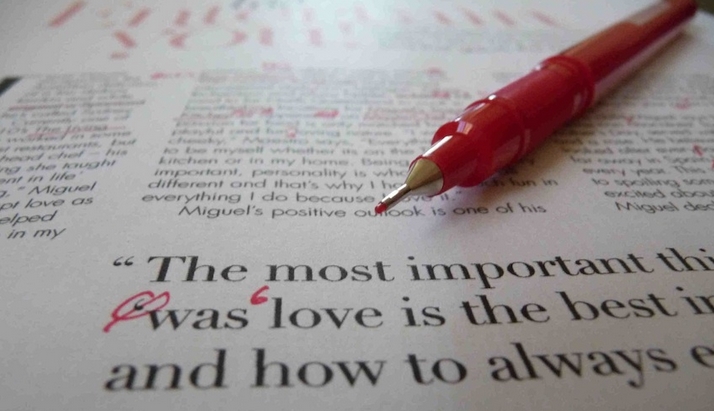I’ll admit that I’m a pedant when it comes to grammar, spelling and punctuation. As a professional proofreader, it kinda comes with the territory. But even back in my internet dating daze (yes, I meant to do that – the dating and the pun), I instinctively ignored profiles and messages from prospective dates if their spelling or grammar were off. Call me a snob – sure, I’ll admit to that too when it comes to English usage (and abuse-age).
So when I come across professional communication, whether it’s websites, flyers, blogs, emails or newsletters (and don’t start me on restaurant menus!), and they’re full of spelling and punctuation errors, it makes me take that communication less seriously. And it makes me reluctant to interact with that brand. If the business doesn’t care enough to check the accuracy of their written content, how can they expect their audience to care about what they’re endeavouring to communicate – or sell?
“Oh, they’ll get the idea,” some people say. Maybe. But is near enough good enough? Not in business or brand image, I say – especially when simple proofreading tricks can be learned. It may be forgivable in a hurried facebook post, although I’m pretty hardline on that front too because you can always pause … before pressing “Post”. Or use the “Edit” feature.
Believe me, I know we can’t be good at everything. I’m rubbish at maths – but I do know it’s ‘maths’ and not ‘math’, the infuriatingly ubiquitous American abbreviation for ‘mathematics’. When I was in primary school, my dad (who could tally the amount of a week’s worth of groceries in his head before he got to the checkout) used to get upset at my lack of mathematical prowess. But a friend’s mother, who recognised my language skills, would tell him, “she’s good at English, and that will stand her in greater stead later on”. Thanks Mrs S!
If spelling, grammar and punctuation aren’t your forte, there are so many options to help with your marketing content writing, from Word’s spelling and grammar tool to online dictionaries and grammar websites. Or you can invest in professional proofreading.
But in the interests of helping you improve your own copywriting, here are 5 common spelling and punctuation mistakes to avoid:
- Confusing its and it’s. This is numero uno because I see it so often. Its is a possessive, like his and her. So if you can substitute its in a sentence with his/her, then you don’t use an apostrophe. It’s is a contraction of “it is” or “it has”, so if in doubt, spell it out! It’s really very simple, so its prevalence is perplexing. (See what I did there?)
- Confusing affect and effect – another grammar golden oldie. Now these two are tricky, because, while strictly speaking, affect is a verb and effect is a noun, well, umm … affect can also be used as a noun and effect as a verb. Yikes! To give you some examples, affect as a verb means to change or influence something: “Loud noise affects me negatively”. Using effect in a similar sentence: “Loud noise has a negative effect on me”. Now, using affect as a noun is not so common – unless you’re a psychologist or psychiatrist, where it’s used to describe someone’s mood or facial expression. But I thought I’d mention it. Effect as a verb is a little more common, but can sound a bit formal: “The MD hoped his new systems would effect change in the office”. You can just as easily say “bring about” or “lead to” here.
- Confusing then and than. Then is mainly used to indicate time: “I get up, then I eat breakfast”. Than is used to make comparisons: “Today is warmer than yesterday”. A vast difference in meaning, but only one vowel’s difference in spelling.
- Adopting grammatically incorrect terms such as, “I’m loving …”. This is the present continuous form of “I love” and using verbs like ‘love’ in present continuous is simply incorrect. What bothers me most is how this trendy phrase has swept across the internet and the media like wildfire. It’s become so commonplace, though, I may have to admit defeat on this one.
- Using an ellipsis, or ‘…’ incorrectly. Firstly, it’s only ever three (3) dots, not two, not four – and certainly not an entire line’s worth. You use an ellipsis when you want to leave out some text in a quoted passage, or to indicate a pause, often in written speech. If you’ve been reading my blogs for a while, you’ll see I’m quite a fan of expressive ellipses.
Language is a living thing, I know. So by all means, have fun with it and use it to reflect your individuality. But there’s a difference between skilful word play and writing that’s sloppy, clunky or full of errors. You may not realise it, but most of your readers can pick up the errors you may have missed, or not bothered to fix. Some will care more than others. Some will judge you – and your brand – more than others. But why risk alienating any of your target market?
Yes, proofreading matters, people!
What are your spelling or grammar pet peeves?




